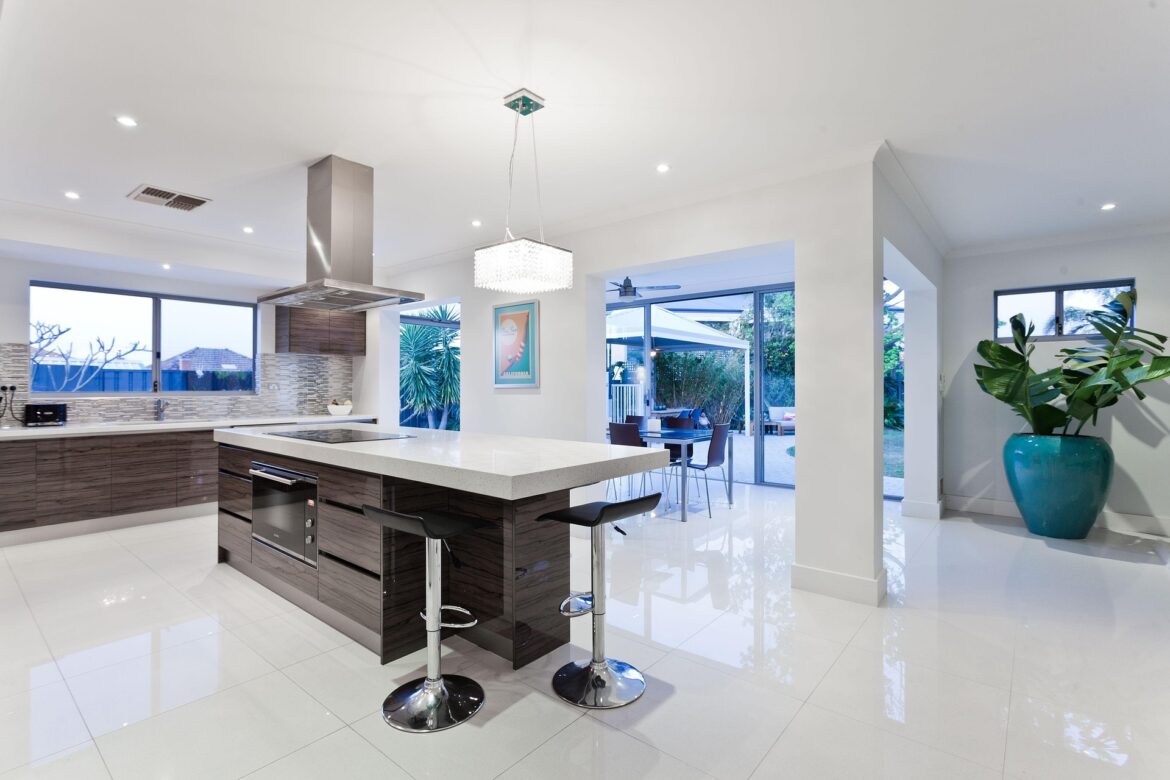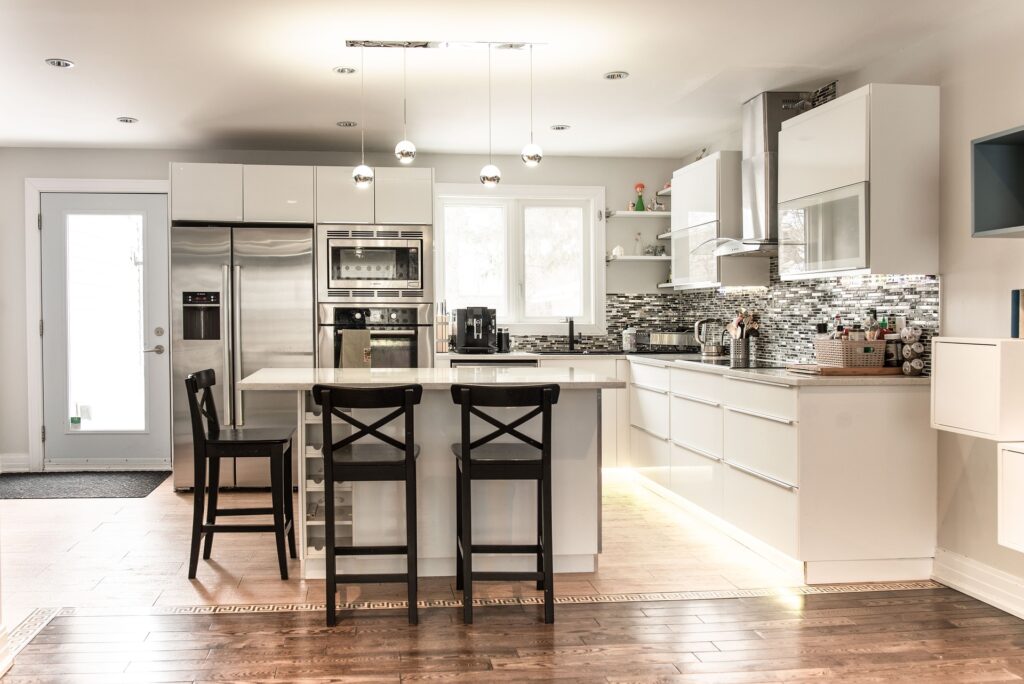
A great kitchen is the heart of any home. It is where meals are prepared, where families gather, and where some of life’s most meaningful conversations take place. A well-designed kitchen can transform the way people cook, entertain, and interact with each other. While tastes and styles vary widely, there are several fundamental elements that contribute to making a kitchen truly great. These include functionality, layout, storage, materials, lighting, appliances, ergonomics, and aesthetic appeal. This article explores these aspects in detail to define what makes a great kitchen.
1. Functional Layout
A great kitchen starts with a well-thought-out layout. Functionality is key, and this is where the concept of the kitchen work triangle comes into play. The work triangle connects the three most important areas of the kitchen:
- The stove (where cooking happens)
- The sink (where cleaning occurs)
- The refrigerator (where food is stored)
The idea is to position these three elements in a way that minimizes excessive movement and maximizes efficiency. The sum of the three sides of the triangle should ideally be between 12 and 26 feet, allowing for smooth traffic flow and easy access.
Beyond the triangle, different kitchen layouts cater to different needs:
- Galley Kitchen: Best for small spaces, where counters run parallel to each other.
- L-Shaped Kitchen: Offers flexibility and is great for open-plan designs.
- U-Shaped Kitchen: Maximizes counter space and storage, ideal for large households.
- Island Kitchen: Incorporates a central island, providing extra prep space and seating.
- Peninsula Kitchen: Similar to an island but connected to a wall, making it great for smaller spaces.
2. Smart Storage Solutions
Storage can make or break a kitchen. A well-organized kitchen maximizes space and ensures that everything has a designated place. Key storage solutions include:
- Deep Drawers: Easier to access than traditional cabinets, deep drawers help store pots, pans, and utensils efficiently.
- Pull-Out Pantry: Instead of a conventional pantry, a pull-out version offers better visibility and accessibility.
- Corner Cabinets with Lazy Susans: Prevent wasted space and make it easy to reach items in hard-to-access areas.
- Vertical Storage: Using wall space for hanging pots, spice racks, or open shelving can free up valuable counter space.
- Custom Inserts: Dividers for cutlery, trays, and spice organizers help keep everything in order.
A great kitchen also considers seasonal or infrequent-use items and provides storage for them, ensuring that everyday essentials remain accessible.
3. High-Quality Materials
The durability and aesthetic appeal of a kitchen depend significantly on the materials used. Investing in high-quality materials ensures longevity and a timeless appearance.
- Countertops: Quartz, granite, and marble are popular choices due to their durability, resistance to heat, and luxurious appearance. Butcher block is a great option for a warm, natural look, while stainless steel is favored in professional kitchens for its ease of maintenance.
- Cabinetry: Hardwood like oak, maple, or walnut offers durability and elegance. MDF with a quality veneer is a more affordable alternative. Soft-close hinges and drawer glides add a premium touch.
- Flooring: Porcelain tiles, hardwood, and luxury vinyl flooring are excellent choices due to their durability and ease of cleaning.
- Backsplash: A backsplash not only adds a design element but also protects the walls. Ceramic, glass, or stone tiles are popular choices.
The right materials contribute to both the kitchen’s functionality and visual appeal.
4. Proper Lighting
Lighting plays a critical role in both aesthetics and functionality. A well-lit kitchen features multiple layers of lighting:
- Ambient Lighting: General overhead lighting, such as recessed lights or pendant fixtures, provides overall illumination.
- Task Lighting: Focused lighting under cabinets or over prep areas ensures safety and precision when chopping, cooking, or reading recipes.
- Accent Lighting: Used to highlight specific design elements, such as glass-front cabinets or artwork.
- Natural Light: Maximizing natural light with large windows or skylights enhances the kitchen’s openness and warmth.
The right combination of lighting ensures that the kitchen is both practical and inviting.
5. High-Performance Appliances
A great kitchen is equipped with efficient and reliable appliances that complement the user’s lifestyle. Key considerations include:
- Refrigerator: The right size and configuration (French door, side-by-side, or top freezer) should suit the household’s needs. Smart refrigerators with touchscreens and inventory tracking enhance functionality.
- Cooktop and Oven: Gas ranges provide precise control, while induction cooktops offer efficiency and safety. Double ovens can be beneficial for those who entertain frequently.
- Dishwasher: A quiet, energy-efficient model with adjustable racks improves convenience.
- Range Hood: Proper ventilation removes cooking odors and improves air quality.
- Smart Appliances: Wi-Fi-enabled appliances allow remote control, recipe guidance, and efficiency monitoring.
While high-end appliances add luxury, they must align with the user’s cooking habits and needs.

6. Ergonomics and Accessibility
A great kitchen considers comfort and ease of use. Ergonomics plays a crucial role in ensuring that the kitchen is user-friendly.
- Counter Height: The standard height is around 36 inches, but adjustable counters accommodate users of different heights.
- Cabinet Accessibility: Pull-out shelves, soft-close drawers, and easy-to-reach storage solutions enhance usability.
- Open Floor Space: Aisles should be at least 42 inches wide in standard kitchens and 48 inches in busy, multi-cook spaces.
- Touchless Faucets: Help reduce mess and improve hygiene.
- Universal Design: Features like wider doorways, low counters, and pull-down shelves make the kitchen more accessible for elderly individuals and those with disabilities.
An ergonomic kitchen reduces strain and enhances the cooking experience.
7. Aesthetic and Personal Style
Beyond functionality, a great kitchen reflects personal taste and style. Popular design themes include:
- Modern: Sleek lines, minimalistic cabinets, and integrated appliances create a sophisticated look.
- Traditional: Features ornate cabinetry, warm tones, and classic details.
- Farmhouse: A cozy, rustic style with elements like butcher block countertops, apron-front sinks, and vintage fixtures.
- Industrial: Exposed brick, metal accents, and open shelving contribute to a raw, urban feel.
- Transitional: A mix of modern and classic elements for a balanced look.
Color schemes, hardware, and decorative elements further define the kitchen’s personality.
8. Multi-Functionality and Entertainment
A modern kitchen is more than just a place to cook. It often serves as a social hub for gatherings, homework, or casual dining. Features that enhance this functionality include:
- Kitchen Islands: Provide additional seating, prep space, and storage.
- Breakfast Nooks: A cozy space for casual meals and conversations.
- Open Concept Design: Integrates the kitchen with the living or dining area for seamless entertaining.
- Beverage Stations: Includes a coffee bar, wine fridge, or built-in espresso machine.
A kitchen that accommodates multiple activities makes it more enjoyable and practical.
9. Energy Efficiency and Sustainability
A great kitchen is also environmentally friendly. Sustainable choices reduce waste, conserve energy, and promote health:
- Energy-Efficient Appliances: Look for ENERGY STAR-rated models to save on electricity.
- LED Lighting: Consumes less energy and lasts longer than traditional bulbs.
- Sustainable Materials: Recycled countertops, bamboo flooring, and eco-friendly cabinetry contribute to a greener kitchen.
- Composting and Recycling Stations: Encourage waste reduction.
A sustainable kitchen benefits both the environment and the homeowner’s budget.
Conclusion
A great kitchen is a perfect blend of form and function. It prioritizes efficiency with a well-planned layout, maximizes storage, incorporates durable materials, and offers high-quality appliances. Thoughtful lighting, ergonomic design, and personalized aesthetics further elevate the space. Additionally, a great kitchen is multi-functional, environmentally friendly, and designed to enhance the cooking and social experience.
Whether designing a new kitchen or remodeling an existing one, focusing on these essential elements ensures a kitchen that is not only beautiful but also a joy to use every day.
Check out everything you need for your kitchen on Amazon by clicking here.
If you liked this article please share it with your friends and family, and then check out more of our articles on Homes and Gardens.
.
